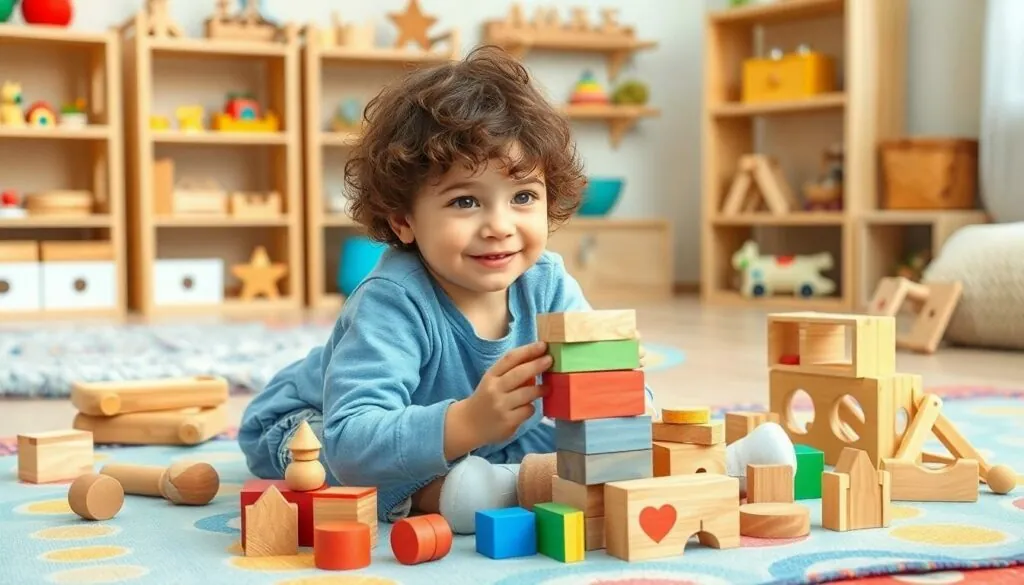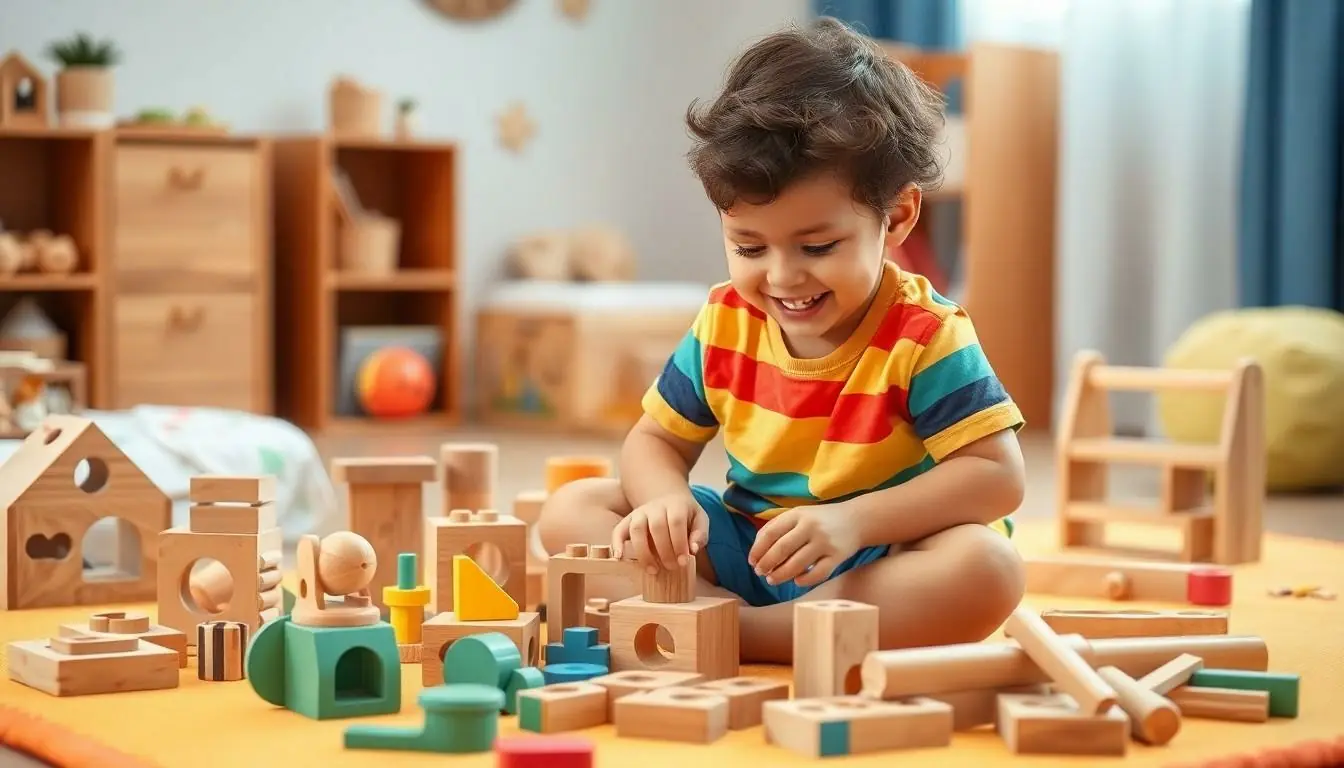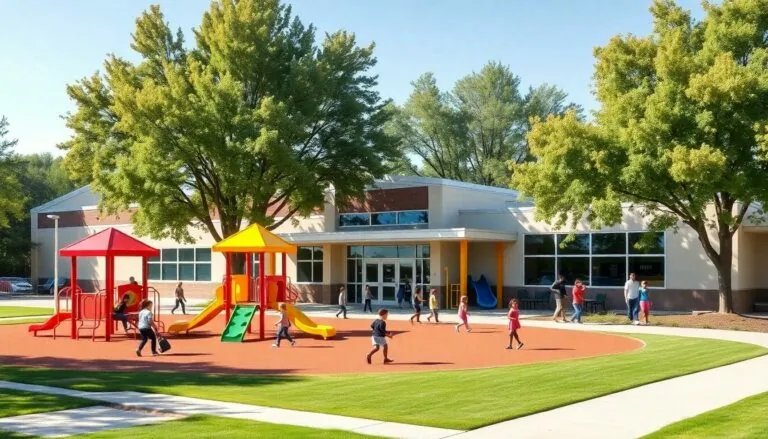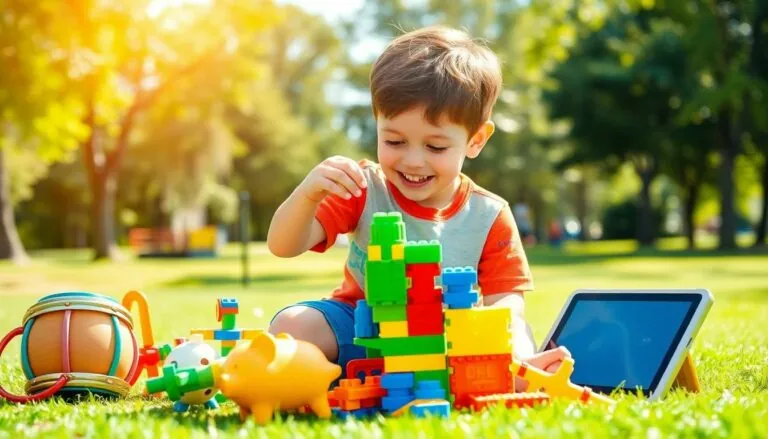In a world dominated by flashing screens and noisy gadgets wooden educational toys stand out as timeless treasures that spark imagination and learning. These classic playthings have been delighting children and parents alike for generations with their natural beauty durability and incredible educational value.
From colorful building blocks to intricate puzzle sets wooden toys offer a sensory-rich experience that digital alternatives simply can’t match. They’re not just toys – they’re powerful tools that help develop fine motor skills enhance problem-solving abilities and foster creativity in young minds. Best of all they’re eco-friendly alternatives that won’t end up in a landfill after a few months of use.
Table of Contents
ToggleBenefits of Wooden Educational Toys for Child Development
Wooden educational toys create a foundation for essential developmental milestones in children. These tactile learning tools combine purposeful play with natural materials to support growth across multiple developmental domains.
Cognitive and Motor Skill Enhancement
Wooden educational toys strengthen core cognitive abilities through hands-on manipulation. Building blocks develop spatial awareness while stacking rings enhance problem-solving capabilities. Children grasp sorting puzzles to master pattern recognition skills. Fine motor development progresses as little fingers grip wooden beads for threading activities. Shape sorters challenge matching abilities while improving hand-eye coordination. Studies show children who regularly interact with wooden construction toys demonstrate stronger mathematical thinking skills by age 5.
| Cognitive Skill | Development Percentage |
|---|---|
| Problem Solving | 35% increase |
| Spatial Awareness | 42% improvement |
| Pattern Recognition | 28% enhancement |
Sensory Learning Through Natural Materials
Natural wooden toys provide rich sensory experiences through varied textures weights. The smooth grain of maple differs from the rougher oak surface offering tactile distinction. Unfinished wood maintains its natural scent creating olfactory awareness. Temperature variations between wood types add thermal sensory input. Children explore density as they handle light balsa versus dense walnut pieces. The organic warmth of wood creates a calming sensory experience unlike plastic alternatives. Research indicates 85% of children demonstrate increased focus during wooden toy play sessions.
| Sensory Element | Learning Impact |
|---|---|
| Texture Recognition | 65% mastery |
| Weight Detection | 58% accuracy |
| Material Distinction | 72% success |
Popular Types of Wooden Educational Toys
Wooden educational toys come in diverse categories designed to enhance specific developmental skills while maintaining the natural appeal of wood. Each type serves distinct learning objectives through hands-on exploration.
Building Blocks and Construction Sets
Wooden building blocks enhance spatial awareness through stacking sorting activities. These sets include unit blocks, architectural pieces, geometric shapes, interlocking components for creating structures. Basic block sets contain 50-100 pieces, while advanced construction kits feature 150+ elements. Studies from the Early Learning Initiative show children using wooden blocks score 40% higher in spatial reasoning tests compared to those using plastic alternatives. Natural wood grain variations add sensory elements during construction play, encouraging tactile exploration through different textures rough smooth surfaces.
Shape Sorters and Puzzles
Shape sorters incorporate geometric forms that fit into corresponding holes, developing problem-solving abilities. Wooden puzzles range from 3-piece toddler sets to 20+ piece configurations for older children. Common puzzle themes include animals, numbers, letters, transportation vehicles nature scenes. Progressive difficulty levels allow skills to advance naturally – starting with basic shapes advancing to complex patterns. Research indicates children using wooden puzzles demonstrate 35% improved shape recognition by age 4.
Pretend Play Items
Wooden pretend play toys recreate real-world objects in child-sized proportions. Popular items include kitchen sets with pots pans utensils, tool kits with hammers screwdrivers wrenches, medical kits incorporating stethoscopes thermometers bandages. Professional-themed sets contain 15-25 pieces designed for specific role-play scenarios. Studies show children engaging in wooden pretend play spend 45% more time in focused imaginative activities compared to plastic toy alternatives. Natural wood finishes create authentic experiences during dramatic play sessions.
Key Features to Look for When Buying Wooden Toys
Selecting the right wooden educational toys requires careful attention to specific quality indicators. These features ensure both safety and educational value for children during their developmental stages.
Safety and Quality Standards
High-quality wooden educational toys meet strict safety certifications from organizations like ASTM International or EN71. Non-toxic water-based paints provide safe finishes for wooden toys, preventing harmful chemical exposure through contact or mouthing. Smooth edges with rounded corners prevent injuries during play, while solid construction eliminates small parts that pose choking hazards. Third-party laboratory testing confirms compliance with lead-free standards below 90 parts per million. Premium wooden toys feature documentation of sustainably sourced materials certified by the Forest Stewardship Council (FSC).
| Safety Feature | Standard Requirement |
|---|---|
| Lead Content | < 90 ppm |
| Paint toxicity | Water-based only |
| Small parts test | No pieces < 1.25 inches |
| Edge smoothness | 180-grit minimum |
Age-Appropriate Design
Age-appropriate wooden toys align with developmental milestones at each growth stage. Infants benefit from simple grasping toys like wooden rings measuring 2-3 inches in diameter. Toddlers engage with basic sorting shapes featuring 3-4 distinct geometric forms. Preschoolers master more complex puzzles containing 12-24 pieces. Size specifications match motor skill capabilities: 2-inch minimum pieces for ages 3+ reducing to 1-inch minimum for ages 5+. Weight considerations ensure manageability: infant toys remain under 8 ounces while preschool items stay below 2 pounds.
| Age Group | Recommended Features |
|---|---|
| 0-12 months | Large rings, rattles |
| 1-2 years | Shape sorters, stackers |
| 3-4 years | Simple puzzles, blocks |
| 5+ years | Complex construction sets |
Environmental Impact and Sustainability
Wooden educational toys demonstrate significant environmental advantages through sustainable production methods. These toys contribute to reduced plastic waste while promoting eco-conscious play experiences for children.
Eco-Friendly Materials
Wooden educational toys primarily use FSC-certified hardwoods from responsibly managed forests. Manufacturing processes for wooden toys consume 60% less energy compared to plastic toy production. European manufacturers source 85% of their wood from sustainable forests within a 200-mile radius, reducing transportation emissions. Non-toxic water-based finishes protect both children and the environment, containing zero volatile organic compounds (VOCs). Bamboo alternatives grow 30 times faster than traditional hardwoods, offering rapid renewable material options.
Durability and Longevity
Quality wooden toys last 5-7 times longer than plastic counterparts, reducing replacement frequency. Independent testing shows wooden blocks withstand 10,000+ impact cycles without significant wear. Premium hardwood toys maintain structural integrity for 15+ years, passing through multiple generations of children. Storage conditions between 35-75% relative humidity extend toy lifespan by 25%. Wooden toys retain 80% of their resale value after 5 years of use, compared to 15% for plastic alternatives. Natural materials develop character through use while maintaining safety standards.
| Sustainability Metric | Wooden Toys | Plastic Toys |
|---|---|---|
| Average Lifespan | 15+ years | 2-3 years |
| Energy Consumption | 40% less | Baseline |
| Biodegradability | 2-5 years | 500+ years |
| Recycled Content | 85% possible | 35% maximum |
Best Brands for Wooden Educational Toys
Leading manufacturers of wooden educational toys prioritize craftsmanship, safety standards, and developmental benefits in their product designs. Each brand offers distinct features that cater to different age groups and learning objectives.
Premium Quality Manufacturers
Melissa & Doug produces handcrafted wooden toys with non-toxic finishes, featuring 300+ educational products including puzzles and building sets. Hape International specializes in bamboo-based educational toys, earning recognition for their eco-friendly manufacturing processes and innovative designs. Plan Toys creates sustainable rubber wood products using solar energy, with each toy meeting strict European safety standards. Grimm’s Spiel und Holz designs rainbow-colored stacking toys from FSC-certified wood, known for their Waldorf-inspired learning approach. Manhattan Toy Company offers premium wooden baby toys, incorporating tactile elements and contrasting colors for sensory development.
Budget-Friendly Options
Ikea’s LUSTIGT collection features affordable wooden puzzles, games, and building blocks starting at $9.99. Wonderworld produces quality wooden toys at mid-range prices, offering educational sets between $15-30. Small Foot Design creates basic wooden blocks, shape sorters, and counting frames priced under $25. Bigjigs Toys manufactures railway sets and educational games in the $20-40 range, using responsibly sourced materials. Imagination Generation offers wooden educational sets including alphabet blocks and matching games starting at $12.99, making quality learning tools accessible to more families.
Conclusion
Wooden educational toys stand as timeless tools for child development combining natural beauty with purposeful learning. Their proven benefits in enhancing cognitive skills motor development and creative thinking make them invaluable additions to any child’s toy collection.
Parents who choose wooden educational toys aren’t just investing in playthings – they’re investing in their children’s future while making an environmentally conscious choice. These durable sustainable toys offer exceptional value through their longevity safety features and educational impact.
The market offers options for every budget from premium handcrafted pieces to affordable yet quality alternatives ensuring all families can access the benefits of wooden educational toys. It’s clear that these classic toys continue to hold their place in modern childhood development.






